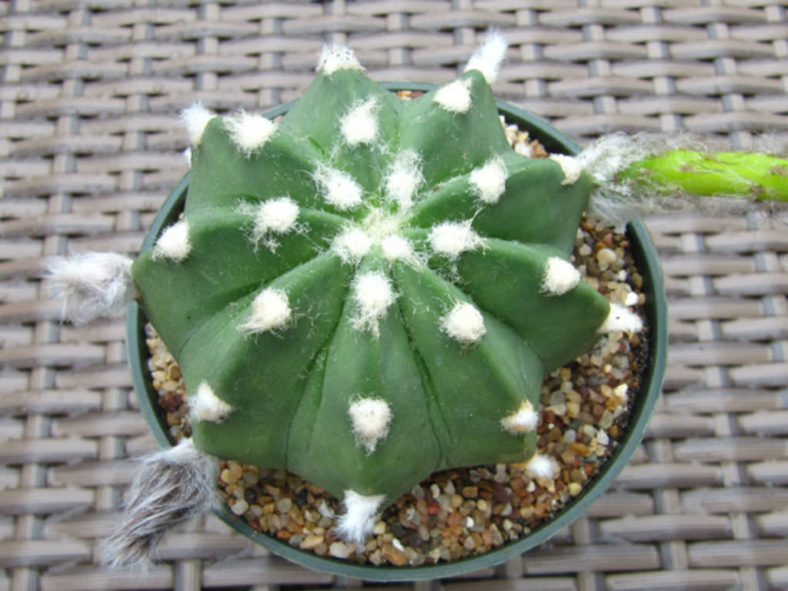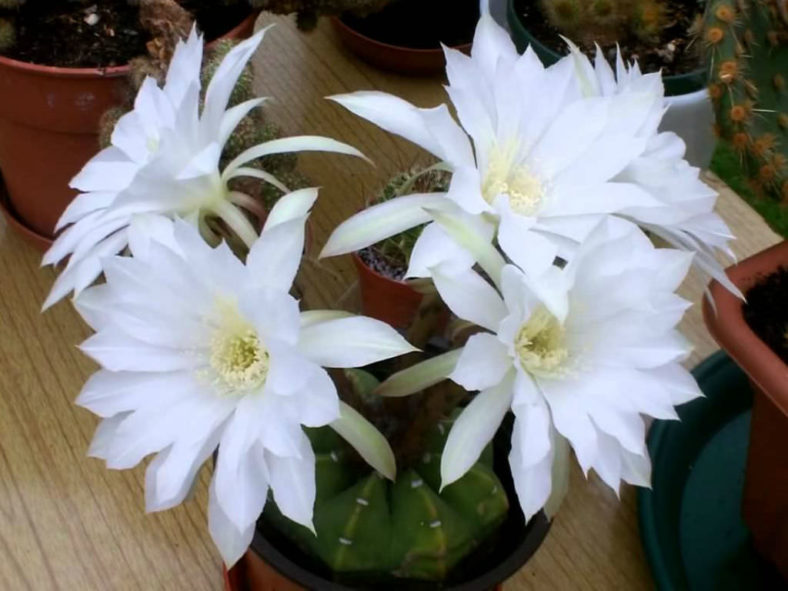Scientific Name
Lobivia subdenudata (Cárdenas) Schlumpb.
Accepted Scientific Name
Lobivia ancistrophora (Speg.) Schlumpb.
Common Name(s)
Domino Cactus, Easter Lily Cactus, Night-blooming Hedgehog
Synonym(s)
Echinopsis subdenudata
Scientific Classification
Family: Cactaceae
Subfamily: Cactoideae
Tribe: Cereeae
Subtribe: Trichocereinae
Genus: Lobivia
Etymology
The specific epithet "subdenudata" (pronounced "sub-dee-noo-DAY-ta") means "nearly naked" and refers to the insignificant spines on the stems of this species.
Origin
Lobivia subdenudata is native to Bolivia and grows primarily in grasslands, shrublands, and forests at elevations ranging from 1,970 to 5,900 feet (600 to 1,800 m). This species is not accepted as a separate species and is treated as a synonym of Lobivia ancistrophora.
Description
Lobivia subdenudata, formerly known as Echinopsis subdenudata, is a small cactus with grayish-green, spherical stems with 8 to 12 ribs sparsely lined with white, woolly areoles that bear a few very short spines. The stems can grow up to 3.2 inches (8 cm) tall and up to 4.8 inches (12 cm) in diameter. They usually grow solitary or slowly produce offsets at the base, forming a dense clump over time. Each areole bears one central and 3 to 7 radial spines.
The fragrant night-blooming flowers are white, funnel-shaped, and appear in summer. They can reach a length of 9 inches (22.5 cm).

Forms of Lobivia subdenudata (Easter Lily Cactus)
How to Grow and Care for Lobivia subdenudata (Easter Lily Cactus)
Hardiness: USDA hardiness zones 9a to 11b: from 20°F (6.7°C) to 50°F (10°C).
If you can grow cacti and succulents successfully, you can likely grow the Echinopsis species without too much trouble. Like many cacti, they prefer a drying period between waterings, even to the point where they slightly wilt. When you water, however, you should water deeply. The plant will noticeably plump up. The cactus mustn't be exposed to prolonged dampness and standing water. Never let your cactus sit in a dish of water. Lastly, be sure to fertilize during the growing season for optimal results.
Echinopsis can be easily rooted from offsets, which tend to cluster around the base of the mother plant. Cut offsets close to the stem, at the narrowest possible place. When rooting cacti from cuttings, let the fresh cutting dry out slightly on a paper towel, and cut the cacti at the narrowest place possible. After a few days to a few weeks, depending on the size of the cut surface, the cut surface should have dried out and formed a callous or slightly rough opening. Once the callous has formed, place the cutting in a rooting mixture of fast-draining cacti soil.
Learn more at How to Grow and Care for Echinopsis.
Links
- Back to genus Lobivia
- Succupedia: Browse succulents by Scientific Name, Common Name, Genus, Family, USDA Hardiness Zone, Origin, or cacti by Genus
Photo Gallery
Click on a photo to see a larger version.


